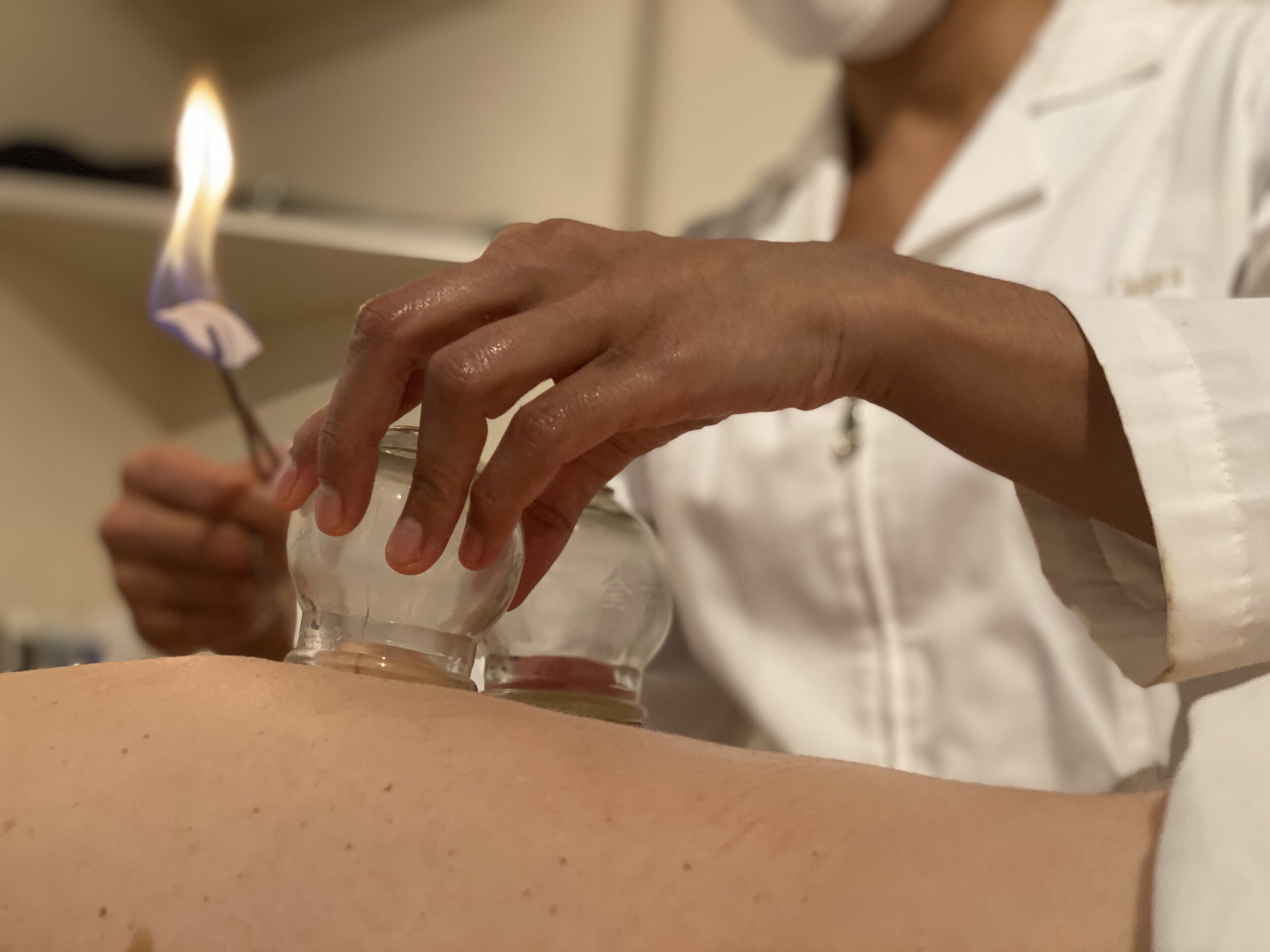
GUA SHA & CUPPING
Tong Ze Bu Tong; Bu Tong Ze Tong
When there is no free flow of qi, there is pain; when there is free flow of qi, there is no pain.
- Huangdi Neijing
(classical text of Chinese medicine)

What I offer:
Both gua sha and cupping are therapies that may be indicated for patients who have come for acupuncture, once a full intake is conducted and an assessment is made. The treatments are offered as part of the acupuncture treatment, when indicated. If you are interested in receiving cupping or gua sha without acupuncture, an initial intake is performed, after which you can opt to receive cupping or gua sha without the acupuncture treatment. In my experience, in the vast majority of cases, receiving gua sha or cupping in conjunction with acupuncture yields the most long lasting effects. I also offer lessons in how to do gua sha. These sessions require there to be at least two people, so that one will be doing the treatment and the other receiving, and then the two persons can switch roles. These instructional sessions are currently being conducted remotely.
What is gua sha?
Gua sha is a technique used in East Asian medicine, often by acupuncturists, to enhance immune function, improve circulation, promote the flow of qi (vital energy) and blood, enhance flexibility of the fascia and muscles, and relieve pain. It can be extremely helpful for people of all ages struggling with the common cold, flu, fever, allergies, asthma, respiratory distress, musculoskeletal ailments including neck, shoulder and back pain, tight muscles and fascia, digestive distress, hepatitis, and many other conditions involving a stagnation of qi and blood.
Gua sha is the commonly used Chinese term for this method, and the technique is often described as scraping wind, or scraping stagnant blood and qi. In English, it is often referred to as “coining” “spooning” or “scraping.”
The technique is performed by a practitioner using a smooth edged tool (such as a ceramic soup soon, or smoothed piece of jade, the rounded lip of a jar…) to repeatedly press and stroke over specific lubricated areas of the body.
What is cupping?
Cupping is a traditional healing method that has been used in various parts of the world for centuries. It was recorded as early as 1550 BC in the Ebers Papyrus (the ancient Egyptian compilation of medical texts), and Hippocrates, considered by many a ‘father of modern medicine’ wrote about cupping as early as 400 BC.
In this technique, cups are used to draw up an area of skin and underlying tissues into a suction. The cups are then left in place (in the case of stationary cupping), to help draw up stagnant qi and blood from a particular area, to release tightness in a very particular area of muscular and fascial tightness (e.g., in the case of a frozen shoulder), to promote the loosening of stuck phlegm in an area (e.g., phlegm in the lungs), to open up underlying structures (e.g., chest tightness from asthma, abdominal gripping from chronic digestive issues, pelvic tension due to gynecological issues). Cupping is also used to help draw energies out of the body that are stagnating and in need of release.
Another method of cupping involves moving the cups over lubricated parts of the body (known as sliding or gliding cupping), which is used to open up areas of the body in broader sweeps and strokes. Both techniques of cupping decompress muscles and connective tissues, enhance circulation, and stimulate the body’s innate healing response.
Many people describe cupping as similar to getting a deep tissue massage, but in reverse (rather than pressing in, the cups are drawing up and out)!

